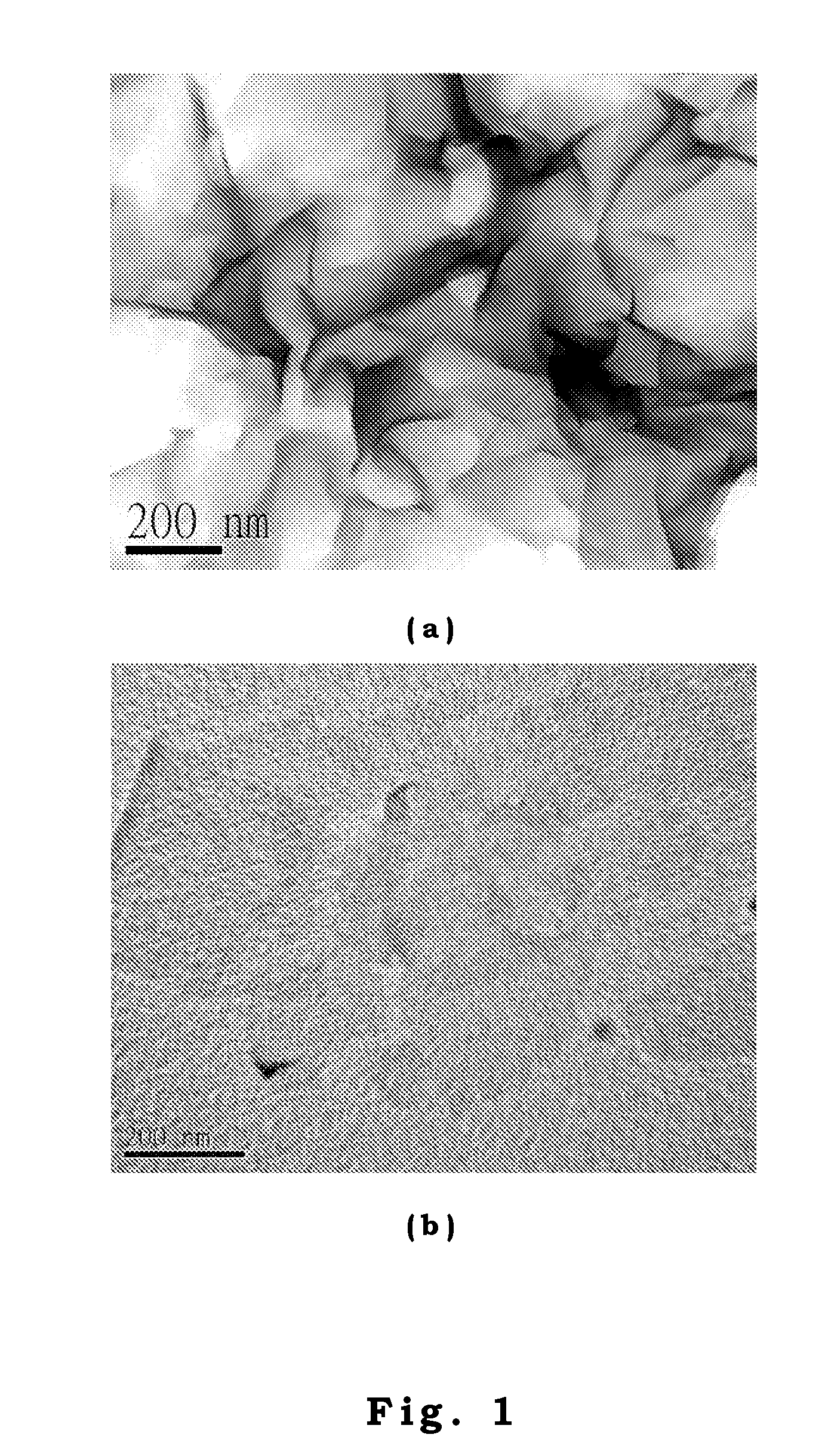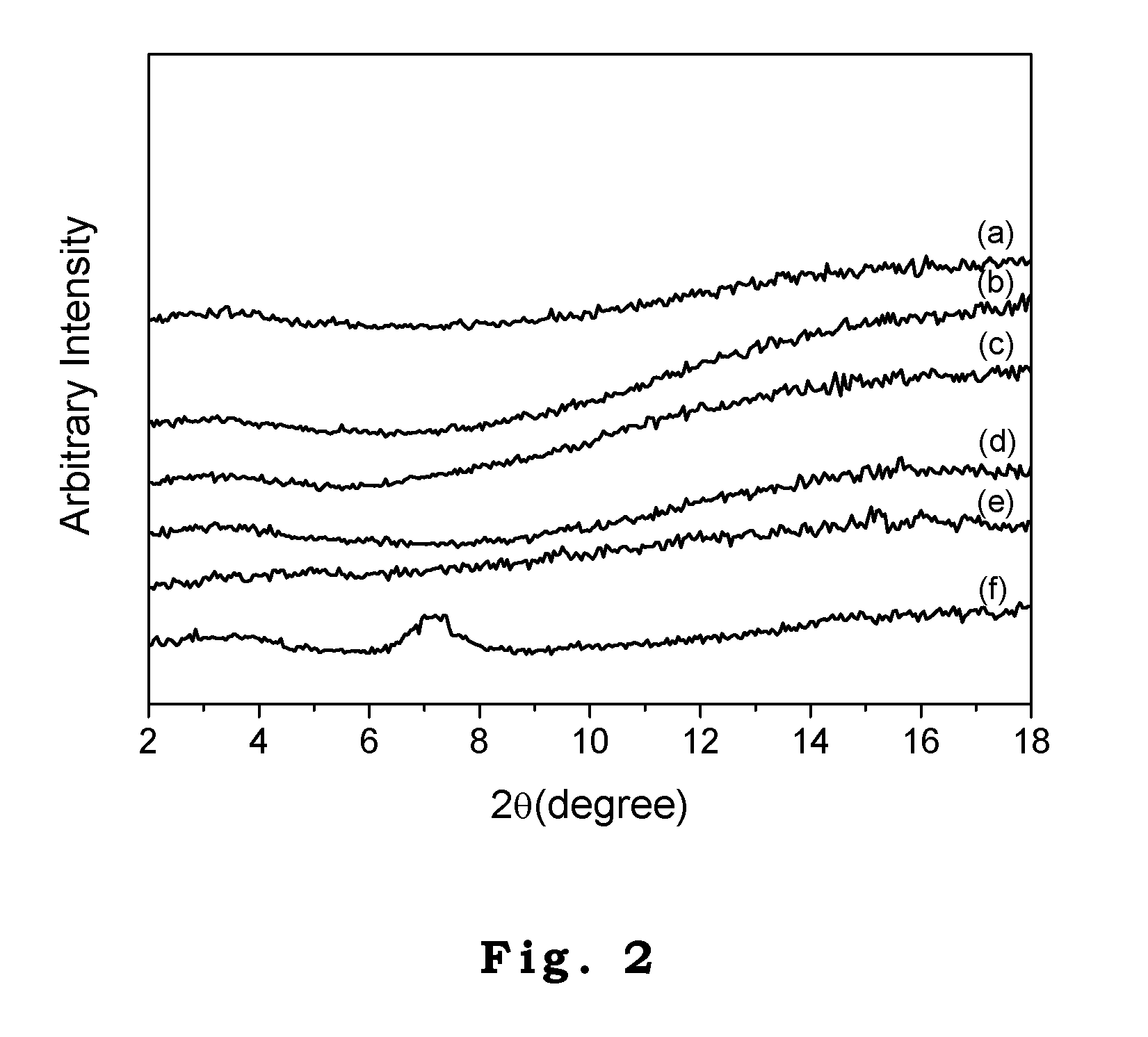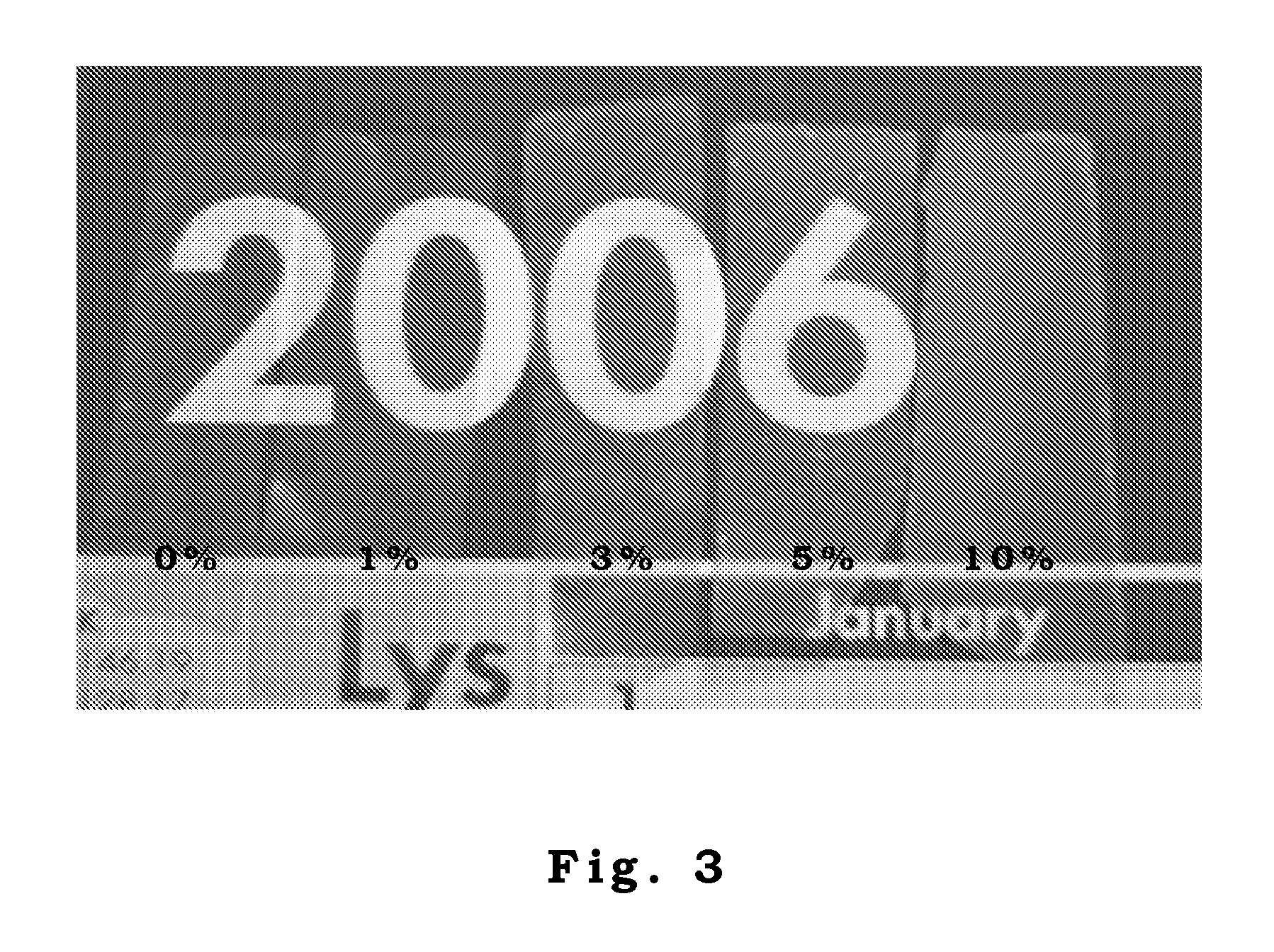Method for forming polymer-clay nanocomposite latex and its application on sealing and semi-conductive materials
a technology of nanocomposite latex and polymer clay, which is applied in the field of forming polymerclay nanocomposite latex, can solve the problems of thicker interlayer, inability to achieve the effect of completely exfoliating clay, and inability to thin the interlayer
- Summary
- Abstract
- Description
- Claims
- Application Information
AI Technical Summary
Benefits of technology
Problems solved by technology
Method used
Image
Examples
example
[0041]we extracted montmorillonite (MMT) (cationic exchange capacity (CEC)=127 meq / g) from the bentonite, which was quarried from the mountain side of Taitung in the east of Taiwan. MMT was treated with KPS in aqueous solution and freeze-dried. The resulting KPS-MMT can be either stored in powder form or suspended in de-ionized water under stir preparing for the next step of soap-free emulsion polymerization. To begin with the soap-free emulsion polymerization, vinyl aceate (VAc) monomers were added to the above KPS-MMT aqueous solution under stir. The solutions were maintained at 50° C. for 50 h first and then heated to 70° C. for ˜3 h until no further polymerization was detected. The conversion for VAc to polymerize into PVAc was ˜80%. The PVAc-MMT nanocomposite latex (nanocomposite latices containing 0, 1, 3, 5, and 10 wt % MMT) containing 1 wt % MMT was designated as PVAc-1% MMT nanocomposite latex and so on. Next, the fabricated PVAc-MMT nanocomposite latices were cast into a a...
PUM
| Property | Measurement | Unit |
|---|---|---|
| Fraction | aaaaa | aaaaa |
| Fraction | aaaaa | aaaaa |
| Fraction | aaaaa | aaaaa |
Abstract
Description
Claims
Application Information
 Login to View More
Login to View More - R&D
- Intellectual Property
- Life Sciences
- Materials
- Tech Scout
- Unparalleled Data Quality
- Higher Quality Content
- 60% Fewer Hallucinations
Browse by: Latest US Patents, China's latest patents, Technical Efficacy Thesaurus, Application Domain, Technology Topic, Popular Technical Reports.
© 2025 PatSnap. All rights reserved.Legal|Privacy policy|Modern Slavery Act Transparency Statement|Sitemap|About US| Contact US: help@patsnap.com



